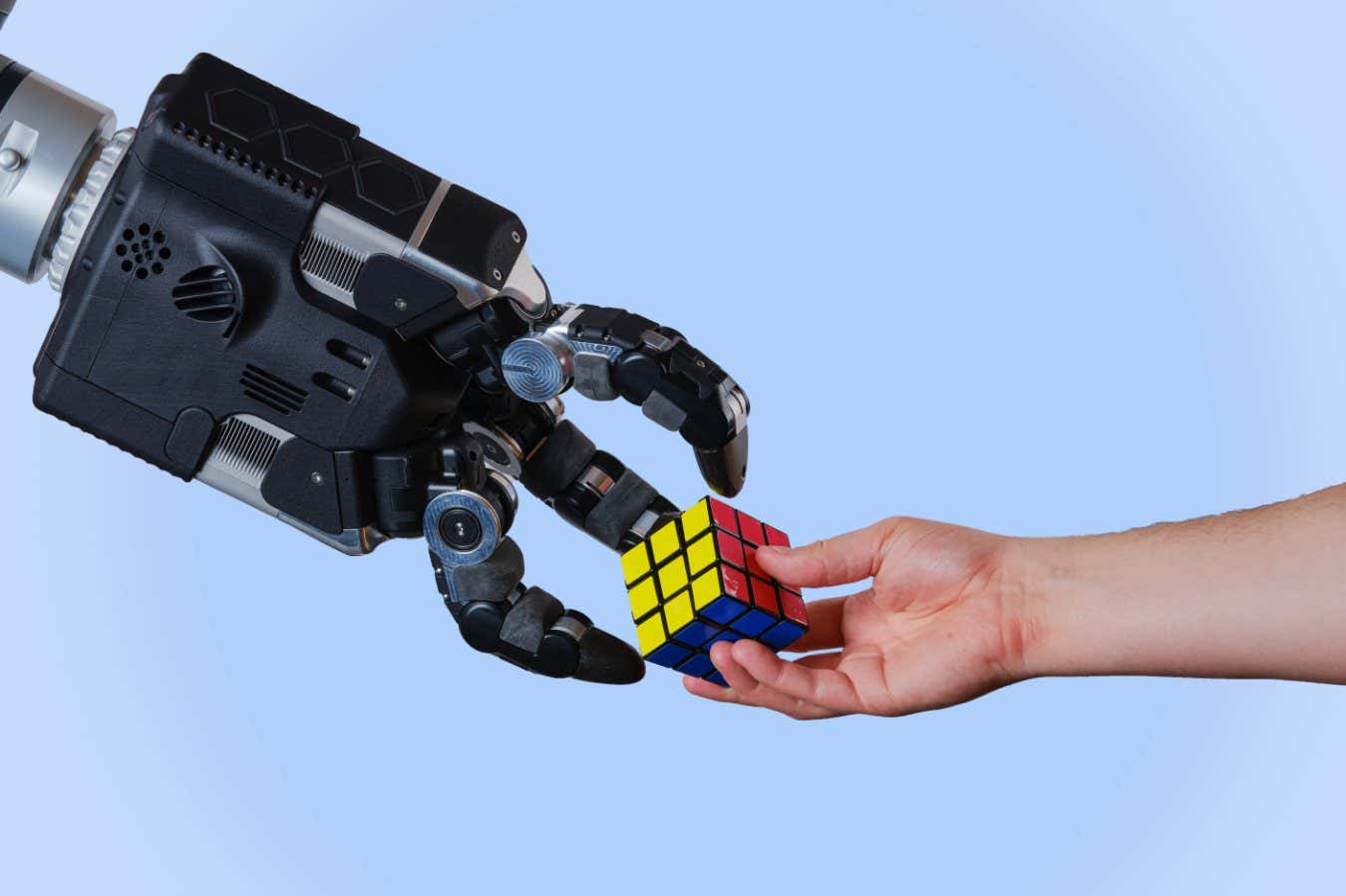A new robotic hand can withstand being smashed by pistons or walloped with a hammer. It was designed to survive the trial-and-error interactions required to train AI robots
By Jeremy Hsu
9 May 2024
The Shadow Hand robotic device was built to withstand collision damage
Shadow Robot Company
A new robot hand provides extremely fast and flexible finger movements, while also being tough enough to survive intense damage. That durability helps the hand, which is already being used in Google DeepMind’s robotics experiments, during the trial-and-error learning required to train artificial intelligence.
This latest robotic hand developed by the UK-based Shadow Robot Company can go from fully open to closed within 500 milliseconds and perform a fingertip pinch with up to 10 newtons of force. It can also withstand repeated punishment such as pistons punching the fingers from multiple angles or a person smashing the device with a hammer.
Advertisement
Read more
Capital letter test is a foolproof way of sorting AIs from humans
The new hand’s robust design is well suited for AI-powered robotics experiments based on reinforcement learning, which allows robots to gradually learn how to interact with environments by fumbling through tasks using trial and error, says Ram Ramamoorthy at the University of Edinburgh in the UK.
“Any interaction with the world is a collision damage risk,” said Rich Walker, director of the Shadow Robot Company, during a press conference.
